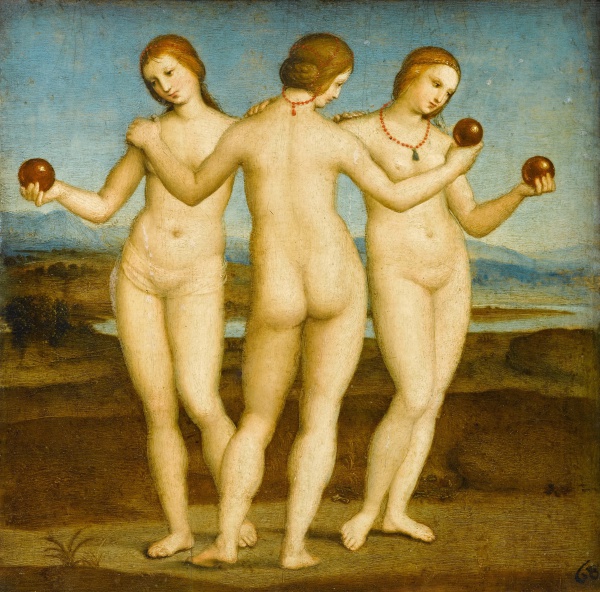Facts About The Three Graces
"The Three Graces" is a captivating oil painting by the renowned Italian artist Raphael, currently housed at the Musée Condé in Chantilly, France. Although the exact date of its creation remains unknown, experts estimate it was painted between 1503 and 1505. This artwork holds a special place in Raphael's oeuvre as it marks his first depiction of the nude female form from both front and back views.
The painting features three elegant figures representing the Graces from classical mythology. Some scholars suggest these figures symbolize different stages in a woman's life, highlighting Raphael's keen interest in the nuances of femininity.
"The Three Graces" is believed to have been inspired by a damaged Roman marble statue located in the Siena Cathedral. However, given the widespread popularity of this subject in Italy at the time, additional influences cannot be dismissed. Over the years, various interpretations of the painting have emerged, with some proposing that the figures embody distinct aspects of femininity, such as chastity and maturity.
In 1930, Professor Erwin Panofsky proposed an intriguing theory: he suggested that "The Three Graces" was originally part of a diptych along with another of Raphael's paintings, "Vision of a Knight." According to Panofsky, the two works together symbolized the Hesperides with their golden apples. However, some art historians dispute this theory due to noticeable differences in the scale and shape of the paintings.
Regardless of these debates, "The Three Graces" remains a standout piece in Raphael's body of work, masterfully blending classical themes with Renaissance artistry. It stands as a testament to his skill in bringing mythological subjects to life with grace and elegance.

 Luxembourg
Luxembourg